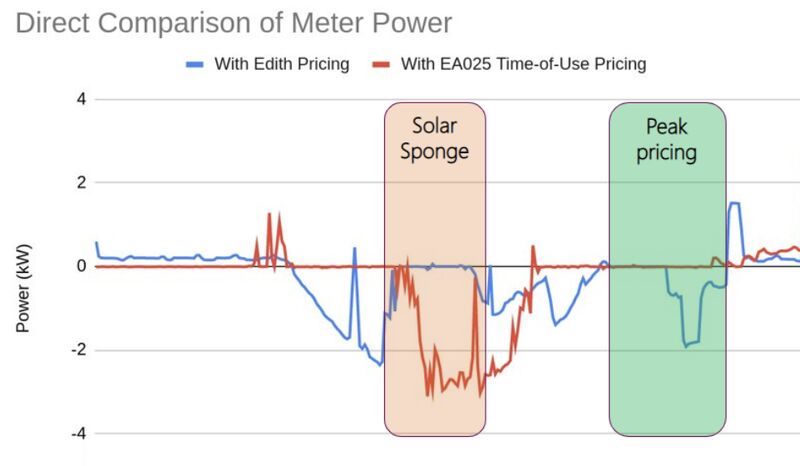The huge jump in the occurrence of negative electricity prices on Australian networks is widely framed as one of the biggest “challenges” of the shift to renewable energy; a downside to Australia’s rooftop solar success story that has regulators and grid operators grasping for blunt instruments to re-assert control.
But is this really something to panic about, and hit the big solar switch-off button, or should negative prices be embraced as a vital signal to solar households – and a major incentive to adopt battery storage – in what is rapidly becoming a two-way electricity market?
Alan Reid, the head of operations at Reposit Power, recently put forward a compelling argument for the latter – and offered some real-life data to back it up.
Reposit, one of Australia’s pioneering smart solar energy management companies, has collaborated with network company Ausgrid on the award-winning Project Edith, to demonstrate how residential solar can continue to thrive on the electricity grid without challenging stability.
The project, which Ausgrid describes as a dynamic network service, essentially asks participants to stump up $18,000 for a combination of solar (at least 6.6kW), battery storage (at least 11.8kWh) and a “Reposit box” – and then hand over control of that system.
In return, customers are promised zero electricity bills and a seamless electricity supply. The success of the project trial has seen Ausgrid put a call out to aggregators and retailers of virtual power plants to be part of an expanded next phase.
But the benefits to customers are just one part of the trial’s success. The other very important part is the impact it has on solar exports and on taming the infamous solar duck curve – by essentially putting a cost to exporting solar during the middle of the day, when the excess generation has sent wholesale grid prices negative.
“It’s been interesting watching the collective pearl clutching over negative export pricing in the NEM as we come to the warmer months and solar, particularly rooftop solar, starts to contribute more to the generation mix,” Reid wrote on LinkedIn.
“To be fair, it is a problem worthy of our attention,” he adds. “The balance of supply and demand in our electricity system is a delicate and precious thing and, at its heart, is the reason the NEM exists.”
But Reid argues that the push to use “stick” led approaches to fix this problem – namely the remote disconnection of rooftop solar from the electricity system – is wrong-headed.
The so-called solar switch-off or remote solar shut-down mechanism is a “last resort” measure devised by AEMO and electricity networks to ensure rooftop solar systems can be curtailed or remotely disconnected from the grid if needed to keep the grid operating safely.
Reid says that while this might be a necessary emergency control option, it should be used as a very last report.
“I think we can do better by first deploying a carrot style incentive for ‘behavioural’ (from the perspective of the grid) change before we collectively clamber, arms and legs flailing, for the stick,” he writes.
To demonstrate this, Reid charts the behaviour of two Reposit controlled solar and battery systems over two clear sunny days; the contrast, as he puts it, “is striking.”

When responding to the network’s standard Time-Of-Use tariff, Reid says the battery “gobbled up the solar early, spilled the excess when it got full (right in the middle of the day!), then discharged to meet demand during the evening peak.”
By contrast, when exposed to the Dynamic Network Tariff – as established for Project Edith – “the system chose to keep the battery empty throughout the early part of the morning, instead exporting the solar.
“As soon as the negative price period hits, the battery then starts to gobble up the solar, with a small amount of spill to the grid in the afternoon.
“Then, come the evening peak, the battery first services the household load, and toward the end of the period calculates it will have some excess energy in the battery and chooses to export that excess back the grid, with the battery empty by the end of the evening peak.
“This is all enacted via a very simplistic version of a Dynamic Network Price calculated once for the day. Imagine the power of such a system with solar curtailment and true 5-minute dynamic network pricing thrown into the mix…
“Whatever your perspective on the danger or power of negative export pricing in the NEM, one thing is irrefutable; It is an indispensable part of a two-sided market, and ultimately drives technological and product innovation in CER/DER to the mutual benefit of us all…. with no backstop in sight.”










